On this day 73 years ago, rising nine years old, I was standing in the gloomy parlour of a somewhat bleak farmhouse in Devon, with my sixteen year old sister and our mother watching the farmer tune in his radio, a large brown plywood cased affair, powered by an “Accumulator”. It was coming up to one o’clock and the Prime Minister, Neville Chamberlain was going to address the nation. His grave, wobbly voice told us we were at war with Germany.
We were evacuees and had arrived at the farm four days before. However, being middle-class – my father worked for the Inland Revenue and made the princely sum of £900 a year, which enabled him to privately educate me, my sister and my brother – there was no government scheme for getting us away from where we lived in the Thames Estuary. Instead he had contacted distant relatives, farming folk from whence his family had come, in North Devon. On being assured that we could be accommodated, he arranged for the three of us to travel by hired car. 
The car was a box square Austin 16 – a large vehicle with ample space in front of the rear seats, in which the driver had placed at least 20 full one-gallon cans of Shell petrol, covered with blankets, which nevertheless reeked. We started in the early morning, and I only remember two things of the journey. The first was crossing Salisbury Plain and seeing Stonehenge. The second was arrival in the dark at the farm at Loxhore, a very remote place indeed.
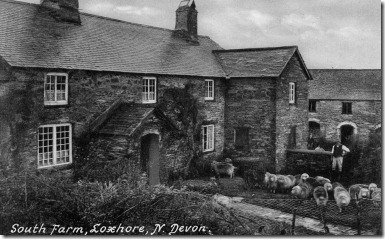 The farmhouse was ramshackle and probably about 90 or 100 years old, maybe with earlier bits as well. Accustomed as we were to running water, hot water from a gas “Geyser” over the bath, electricity, daily deliveries of milk and newspapers and the services of a maid or home help, this was a new experience for us. No electricity, running water, drainage or heating. There were stairs that creaked and squeaked at every foot-fall and rooms at different levels, up to which, at night in pitch black we climbed uncertainly aided only by a small sputtering paraffin lamp. Washing was undertaken with bowls and jugs, usually with cold water from the pump in the yard, and the lavatory was a two-holer outside the kitchen where one’s detritus dropped on to soil below, which some unfortunate farm labourer removed several times a week, replacing with fresh soil. Light was by paraffin lamp and cooking was on a coal-fired range.
The farmhouse was ramshackle and probably about 90 or 100 years old, maybe with earlier bits as well. Accustomed as we were to running water, hot water from a gas “Geyser” over the bath, electricity, daily deliveries of milk and newspapers and the services of a maid or home help, this was a new experience for us. No electricity, running water, drainage or heating. There were stairs that creaked and squeaked at every foot-fall and rooms at different levels, up to which, at night in pitch black we climbed uncertainly aided only by a small sputtering paraffin lamp. Washing was undertaken with bowls and jugs, usually with cold water from the pump in the yard, and the lavatory was a two-holer outside the kitchen where one’s detritus dropped on to soil below, which some unfortunate farm labourer removed several times a week, replacing with fresh soil. Light was by paraffin lamp and cooking was on a coal-fired range.
The farm itself was of about 100 acres of mixed land and activity. Fields of a few acres each grew various vegetables, wheat, barley and corn on a rotation basis, with one year in four or five lying fallow, when the 30 or 40 cows were grazed upon it, so there was always green grass for them. The weather was good and it was harvest time. It was before the combined harvester – so there was a tractor-pulled scything machine cutting the corn, followed by workers and volunteers, including me and my sister, gathering up the loose shoots and forming them into bundles called ‘stoops’ which when then stood up to dry out. Later the threshing machine, driven by steam engine would come and separate grain from stalk.
Shortly after we had settled in, another family arrived; my school friend Michael who had proposed the idea to his parents following my telling him of our plans, his older brother of 14 and their mother.
For a few days at least, it was the holiday I had never had. With Michael and his brother I explored the farm, the fields and the surrounding area. We played games, read books and wrote letters to our fathers. On one side of the farmyard there was a large barn with a hay loft, reached by a step-ladder. The three of us used to congregate in there and wile away an hour or two, talking of the war, our parents, school and farm life. There was the rotund, red-faced local woman who ran the farmyard, feeding the chickens which ran everywhere, gathering the eggs and wringing necks when birds were wanted for the pot. Wringing a chicken’s neck seemed an easy operation and I volunteered to do it. The woman – a grubbily dressed, head-scarved person – picked up a bird and handed it to me. I broke its neck all right, but didn’t wring the life out of the poor creature. It fluttered mightily and I dropped it, whereupon it ran around the yard with its head flapping down almost to the ground. The woman made a scornful comment to me, then with surprising agility caught the bird and administered the coup-de-grace.
We watched the butter being churned and the cows being milked, where we assisted with varying degrees of competence. Mine was nil. But I was happy. Mother hated the smells of the farm. I loved them.
I was aware my mother didn’t like Michael’s mother, but not of her basic discontent. My sixteen year old sister, trying without much help to come to terms with emerging womanhood, bore the brunt of her frustrations and general ennui. She wrote of the days: None of us was happy. Mother was beside herself with dislike of everything and everyone.
Memory tells me she was mistaken in my case – I was enjoying myself. Everything was so new and different, with a sense of freedom our narrow middle-class life never had. Our hosts, distant cousins of my father, were simple, dour, spare people, but good hearted. The man showed us the farm and the running of it. Then there were farm labourers, poor, honest, kindly folk who would share their lunch bread. Never before had we been in such close contact with ‘the working class’ and, with the exception of contacts at school with a few London evacuee children later in the war, it didn’t happen to me again until I was called to do my National Service in 1949. There was an elderly distant cousin with a cottage and smallholding just down the hill from the farm, who on seeing me for the first time said in his soft broad Devon accent: “Old Jim Skinner (my grandfather) will never be dead as long as this lad’s alive,” and made a great fuss of me. He gave us goat’s milk and cheese, about which we townies were less than enthusiastic, and told us about the vegetables and fruit in his smallholding. I loved this rural life and as soon as I saw my father again I told him I wanted to be a farmer. It was clear he had accountancy in mind for me.
The farmhouse kitchen was large, with a flagstone floor, on which resided assorted oddments of quite large furniture, with a big old dark brown painted Victorian pine table in the centre. It was where we ate most of our meals and was the heart of life in the farm. There was always good bread and plum jam, fresh butter and pots of cream. Cooked meals were usually meat and vegetable stews, or chicken.
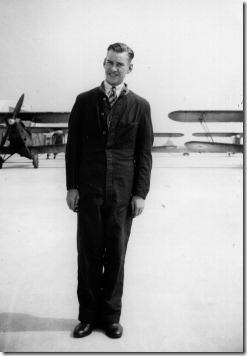 Now, though as of September 3rd. Britain and France were at war with Germany. On the previous day at RAF Hullavington Wiltshire my 19 year old brother had received his Commission as an RAF Pilot Officer (Photo, left, taken on that day) . He would go on to pilot a Hampden bomber 44 times over Germany, move to the Middle East and eventually lose his life in a bombing mission to Derna, Libya in December 1941.
Now, though as of September 3rd. Britain and France were at war with Germany. On the previous day at RAF Hullavington Wiltshire my 19 year old brother had received his Commission as an RAF Pilot Officer (Photo, left, taken on that day) . He would go on to pilot a Hampden bomber 44 times over Germany, move to the Middle East and eventually lose his life in a bombing mission to Derna, Libya in December 1941.
For a nine year old revelling in the farm life, our abrupt leaving was something of a shock. I remember nothing of our departure except sitting in a railway carriage with dimmed lights, progressing slowly eastwards towards London.
My sister recalls the surprise announcement of our mother that we were leaving and going back to Westcliff-on-Sea: I asked, “When?” “Tomorrow. We’ll get the weekly bus.”
“That night we feverishly packed our bags and, early the next morning, having borrowed some money from the farmer and his wife for the train tickets, said our goodbyes and thank-yous for the sandwiches of ham and cheese they had provided for the journey, but no one was shedding a tear at our departure. We set off to walk across the fields to the road where we would pick up the bus to take us to Barnstaple. We each carried our own suitcases, young Pat trudging along manfully trying to keep up with us. His suitcase was nearly as big as he was. He was very good, and very brave, I thought”.
Back in “the War Zone”, my father then made one of several brilliant decisions. He moved us to Brighton, a few months short of the Fall of France and the Invasion Scare, and then to North London, in time for the start of the Blitz. There are memories galore, but none compares with those short weeks spent as a freelance evacuee.
© Patrick Skinner, 2012

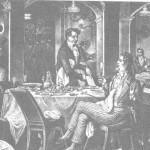
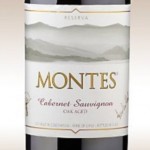
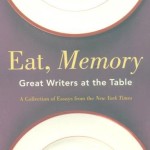
“LIKE WEBSTER’S DICTIONARY, WE’RE MOROCCO-BOUND” – A Story from the 1980s
A little while back I wrote about a short but unexciting experience in Algeria. Come to think of it, North Africa was never one of my happier hunting grounds in my working days, whereas I had some most interesting and occasionally lucrative assignments in the Eastern Mediterranean and the Arabian Gulf. One job in Morocco, though, deserves a book to itself… and it was a book, or rather TWO very large books that first introduced me to the country. Esoterically titled “Traditional Islamic Craft in Moroccan Architecture”, they sounded much more dry and specialist than they really were. They were the work of a French “Mr Fixit” who had fitted himself out as an architect/adviser-cum-supplier to King Hassan II of Morocco; an amazing man named André Paccard – look him up on Google, it’s worth it!
Whatever H.M. the King wanted, Paccard supplied it – whether it was fine French foods, machinery, household furniture and furnishings, jewelry or, in one case, 24 purpose-built villas for VIP foreign visitors invited for a royal celebration. But his jewel in the crown, so to speak, was to be two de luxe books about the mosques of the country. They would be a tribute and “thank you” to the King for his patronage. To do this he was facilitated to travel all over Morocco, photographing mosques old and new, grand and tiny, city-based and rural. But they provided much more than architectural and background photography and information; they recorded and graphically demonstrated the traditional Moroccan crafts that seemed doomed to die out, forgotten and unrecorded – stone work, tiles decorative and constructional, wood crafts of many kinds, pottery, glass and glassware, calligraphy and illuminated scroll-work – indeed every aspect of traditional Moroccan arts and crafts.
The pictures were stunning and, having been royally sponsored it was good business for Monsieur André Paccard, the author/publisher.
The two beautiful volumes, each of 500 pages, were originally published in 1980. A few copies may be had from various international booksellers at prices ranging from US$525 to $1,500. I am rather sorry I sold my set when we moved from England to Cyprus in 1991 for $200!
André Paccard had some years of success as a royal servant – eventually, for various reasons (over-reaching himself, perhaps; usurped in his work by some jealous employees, certainly, he fell from favour. After losing most of his assets, he died in the South of France in 1996, an embittered alcoholic. When his business was liquidated, I was left with several hundred copies of his master work. His French business associates didn’t want to know about these, so I was able to sell them off, slowly over about three years, to schools, universities, libraries and other institutions. Ultimately it became a “nice little earner”.
My second time in Morocco was on behalf of an American multi-national. I was there four days – and it rained the whole time. What I was able to see through the down-pours suggested to me that this was, is, a lovely country. Despite the torrential rain, we ate well in some of the best restaurants in Marrakech. The food was stylish – French, African and Arab influenced. It has some interesting recipes of its own, of which these are a couple, adapted from a delightful and practical small paperback, the cover of which is shown below.
Some new and second-hand copies are available from Amazon. If you are exploring regional cookery and want a very good starter volume with a varied range of recipes and ideas, it is well worth buying. Brand new tagines in which to make lovely North African “casseroles” are widely available, in many stores and on-line.
RECIPES
Chicken with Prunes and Almonds (Poulet aux Pruneaux et aux Amandes)
The French absorbed a number of dishes from the Moroccan cuisine into their repertoire, but oven baked foods cooked in utensils called tagines (a contemporary Moroccan-made example of utterly traditional shape is pictured above) have not become a part of their cooking in the way that couscous has, probably because combining fruit with meat is something they do only rarely. However fruit can be an excellent complement to meat and I have a liking for the dishes called tagines, like this one, which bring the sweetness and soft texture of fruit together with meat.
Preparation: 20 minutes. Cooking: 1½ hours
CHICKEN TAGINE – Ingredients for 4 Servings
1 chicken weighing about 1½kg /3 Ib
2 large onions, peeled and finely sliced
4 or 5 tbsp ground almonds (* See Note)
3 tbsp olive oil
20 prunes, pitted and soaked for 2 hours 1 tbsp mild paprika
Salt Pepper
1. First of all, soak the prunes in cold water for a couple of hours before you begin
to prepare the rest of the dish.
2. Rinse the chicken, cut it into small pieces and set aside.
3. Brown the onions, which should be very finely sliced, in a frying pan and then add the chicken pieces.
4. Once the chicken is tender, transfer it and the onions to a tagine or casserole, add the prunes, salt, pepper, paprika, the ground almonds and enough of the water in which you soaked the prunes to cover all the ingredients.
5. Stir well, then cover the pot and allow the stew to simmer over a low heat for one hour.
Serve in the tagine.
Note: For the best taste use fresh Cyprus almonds, peeled. Pat them dry and then whizz them in your food processor until they are finely chopped. Make them creamier if you wish by blending longer, but I prefer them with just a little “bite”.
Chicken with Lemon and Olives (Poulet au Citron et aux Olives)
Preparation: 20 minutes Cooking: 1 hour
Ingredients for 4 Servings
1 chicken weighing 1½kg/3lb
3 preserved lemons, cut into thin slices (see Note)
3 tbsp vegetable oil !
1 onion, finely chopped
3 cloves of garlic
200g/7oz purple olives, pitted
A thread of saffron (or half tsp of saffron powder)
A bunch of coriander (or parsley, if you don’t like coriander)
Salt and pepper
Method
1. Cut the chicken into pieces, brown them in oil in a large pan and put to one side.
2. Add the onion, garlic, saffron, salt and pepper to the same pan, stirring over a medium heat for 5 minutes before returning the chicken pieces to the pan together with enough water to cover all the ingredients.
3. Continue cooking, covered, until the chicken is tender, which should take about 45 minutes.
4. While the chicken is cooking, blanche the olives in boiling water for 5 minutes and, when the chicken has cooked for about 30minutes, add them and the slices of preserved lemon to the sauce.
5. Scatter over the chopped coriander just before serving.
PRESERVED LEMONS – Making ‘em and using ‘em
Preserved Lemons can be found in some Deli counters. But they are simple to do yourself, but remember you need to make them a couple of weeks before you intend to use them.
Preserved Lemons Recipe
1. Select firm, fresh, unwaxed lemons.
2. Trim the nubs off both ends of each lemon.
3. Cut the lemon as if you are going to cut it into four pieces, but don’t complete the cut.
4. Put a teaspoon of salt in the bottom of a half-litre/pint-sized jar.
5. Put another teaspoon of salt into the quartered lemon.
6. Push the lemon into the jar, open end down, and push hard to squash it a bit so as to release its juices.
7. Put a teaspoon of salt over the top of the lemon.
8. Repeat the process, putting a teaspoon of salt inside the second lemon, and then squash it down hard on top of the first lemon.
9. Add another teaspoon of salt on top of the second lemon, and repeat the process for the third and final lemon. Add a teaspoon of salt on the very top. The jar should be halfway full of lemon juice from having compressed the lemons. If needed, squeeze some extra lemon juice into the jar to bring it to the halfway point. And don’t waste that lemon – cut it up and stuff it into the jar.
10.Now pour some water that’s been boiled and cooled (sterile) into the jar to fill it up the rest of the way. Repeat this process for however many jars you wish to make.
11.After you add the water, screw on the lid and let the jar sit at room temperature for 3 days, giving it a shake and turn it upside-down/right-side up a few times a day.
12.After 3 days place the jar in the refrigerator and let it sit for at least 3 weeks before using. Keep the jar in the refrigerator.
NOTE: Whatever dish you use them in, discard the pulp (it’s the peel that is used) and thoroughly wash the peel to remove excess salt.